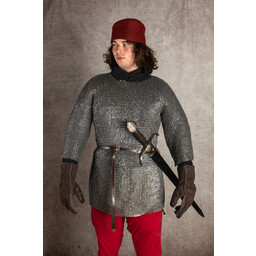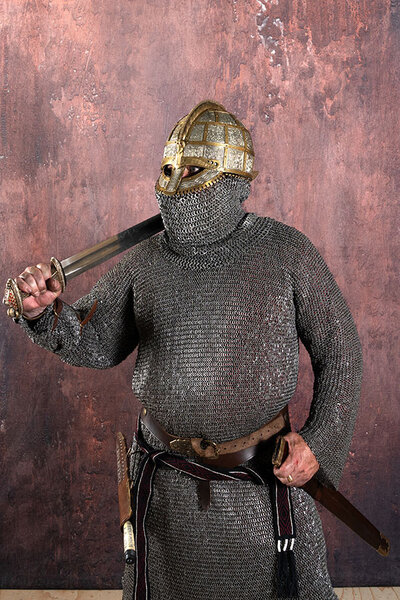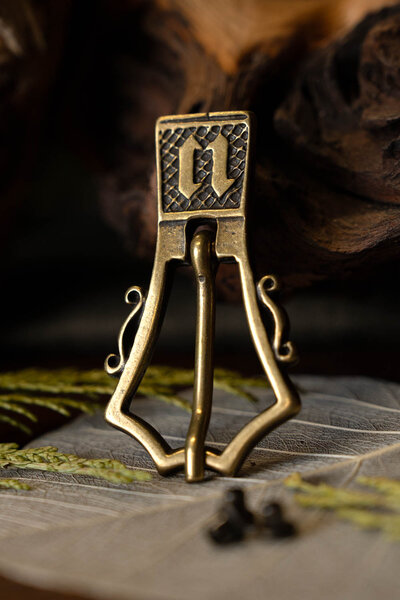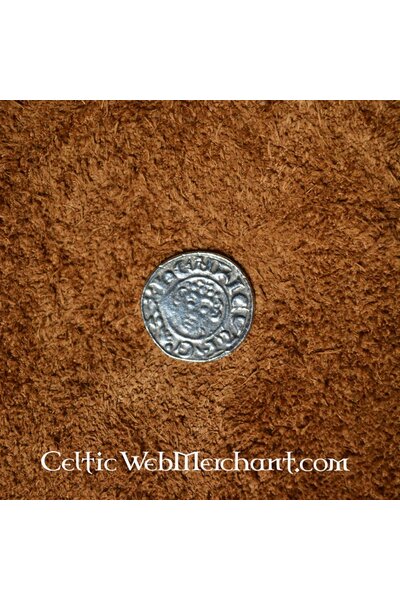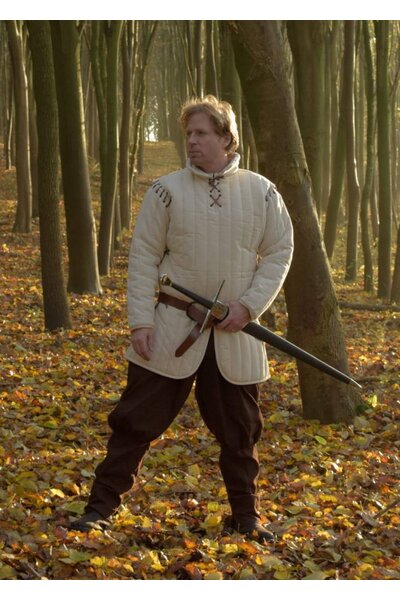Product description
This hauberk is a replica of several originals. Many excavated hauberks are made of a combination of mixed rings of which most rings have a diameter of approx. 6 mm. This hauberk is developed after these excavated originals. Because the rings are significantly smaller than most hauberks, this hauberk could be made of 1 mm thick spring steel. This hauberk is extremely efficient. It has smaller openings so it prevents stab wounds has and a weight reduction of 30%. This hauberk is perfect for experimental archaeology, full combat re-enactment and living history.
Short chainmail shirts like these were worn by Vikings and others in the early Middle Ages. They remained in use until the 11th century and made a comeback in the second half of the 14th century. From the second half of the 14th century, such short chainmail shirts were called haubergeons, a diminutive of hauberk, or long chainmail shirt. Haubergeons offer optimal protection and more freedom of movement than the hauberk. Therefore, they were also ideal to wear under armor.
Armor parts can be easily attached to the shoulders and arms of the haubergeon with leather laces.
| Size | Chest circumference | Length from shoulder | Sleeve length from armpit | Weight ca. |
| M | 130 cm | 80 cm | 25 cm | 8,1 kg |
| L | 135 cm | 80 cm | 26 cm | 9,4 kg |
| XL | 150 cm | 86 cm | 30 cm | 10,5 kg |
Details
Material: spring steel 1 mm
Composition: 1:4 construction
Mixed riveted flat rings
Size: M, L, XL
Weight: 8,75-10,5 kg
Based on historical original
Shipping weight: 10 kg
This item is handmade in a limited amount. Each item is unique. Finish and sizes can slightly vary.
Packaged with 100% recycled material
When packaging this item, we exclusively use 100% recycled plastic and recycled paper/cardboard from FSC certified forests. We reuse a large part of the material directly without the intervention of a recycling process.
Recycle the material by separating your waste:
1. Cardboard: separate or reuse your paper.
2. Plastic cushions, clothing bags and plastic tape: separate or reuse your plastic. If possible, pierce the cushions with a volume reduction needle.
3. Paper packaging for jewelry and small items: these have a plastic inner layer. Remove these, then separate your paper and plastic.
